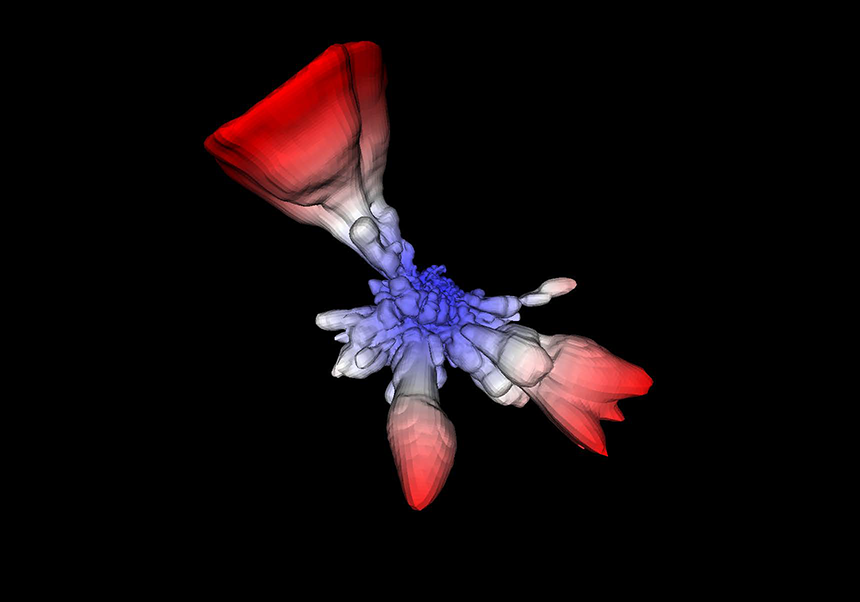
PhD Tesis defense
On the 9th of may, at 11:00 , in the classroom of Lise Meitner, Faculty of Phyfiscs, C/ Doctor Moliner, 50. 46100 Burjassot, will take place the PhD thesis defense of Beatrice Giudici, that has been supervised by Michael Gabler.
Abstract:
Core-collapse supernovae are among the most studied phenomena in astrophysics, yet observations alone cannot fully unveil their complexities. Even with advancements like the James Webb Space Telescope, these events remain rare. Numerical simulations, particularly magneto-hydrodynamic codes with detailed neutrino treatment, are invaluable for probing the initial stages of explosions obscured by the outer layers of the progenitor star. However, the computational cost of these simulations is high, necessitating simplifications to achieve long-term evolution up to shock breakout and beyond. Nevertheless, such extended simulations enable comparisons with observations, providing insights into explosion properties and their dependence on progenitor star characteristics. This thesis examines red supergiant progenitor models to identify systematics in the explosion properties. Specifically, it analyzes the morphology, explosion energies, nickel-56 yields, and clump structures in the ejecta. Initial results reveal relationships among explosion energies, nickel-56 yields, and progenitor star properties. Quantities related to the proto-neutron star, such as masses, radii, kick velocities, and angular momenta, are also studied and compared with existing literature. The analysis continues with simulations extended to 10 days after the explosion, focusing on Rayleigh-Taylor instabilities at the (C+O)/He and He/H interfaces, with the former showing the strongest instability growth. This influences large-scale radial mixing of nickel-56 and other elements in the ejecta. The models, grouped into three classes based on similar instability growth and mixing behavior, reveal that reverse shock interactions can suppress Rayleigh-Taylor instabilities, altering the ejecta morphology. A linear relationship between nickel-56 mixing and the progenitor's radial density profile is also established. Finally, simulations are extended to one year after the explosion explore the hydrodynamic effects of nickel-56 radioactive decay and long-term morphological changes. A detailed study of elemental distributions provides insights into observations and aids in interpreting supernova data.






